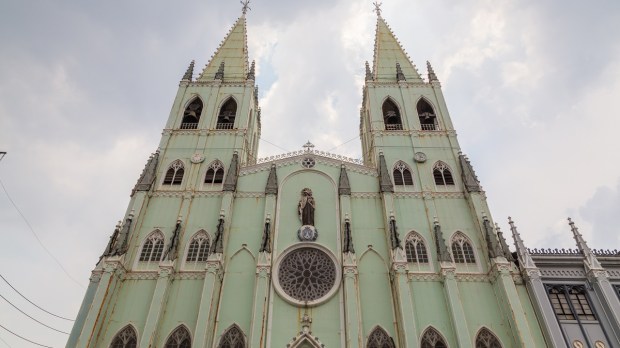From marble to wood, churches can be made with a range of materials reflecting a country’s resources and cultural heritage, but sometimes building materials are chosen for practical reasons. That’s the case with the Minor Basilica of San Sebastian in Manila, Philippines, the country’s only church made entirely of steel.
Originally built with wood in 1651, the church was destroyed by fires a few years later. Newly built structures were later brought down by fires or earthquakes in 1859, 1863, and 1880. By the 1880s, locals realized they needed to rebuild the church with a material that could withstand the fires, earthquakes, and tropical typhoons that periodically hit the capital of the Philippines.
The local parish commissioned Spanish architect Genaro Palacios to come up with a weather-resistant design for the church. Palacios created a structure made of steel inspired by the design of the Gothic Cathedral of Burgos, Spain.

An estimated 52 metric tons of steel were transported from a Belgian foundry to the Philippines between 1888 and 1890, with the first “stone” set down in September of 1890. Once the skeleton structure was in place, resembling a Gothic version of the Eiffel Tower, builders filled the walls with mixed sand, gravel and cement.
Once completed, the walls and ceilings were painted to look like they were made of marble and jasper stone, and stained glass windows imported from Germany were installed. The impressive Gothic construction, structured around two openwork towers united by steel vaults, rises to 105 feet above the ground. In 1891 the church was consecrated by the Archbishop of Manila and raised to the status of a minor basilica by Pope Leo XIII.

While steel proved to be a fire and earthquake-resistant material, it also proved vulnerable to rust and corrosion caused by humidity and marine air blowing in from Manila Bay. In 1982, the church was declared under threat and a restoration plan was launched by the National Historical Institute.

Today, the church is considered a National Cultural Treasure and a National Historical Landmark and was listed in 2006 as part of the Philippines’ tentative list of monuments to be designated as UNESCO World Heritage Sites.



